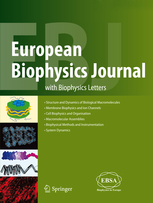VEGA 2/0143/17
Diastolic function of the ryanodine receptor and generation of arrhythmogenic calcium waves
Principal Investigator: Alexandra Zahradníková (2017); Alexandra Zahradníková jr. (2018-2019)
|
Annotation:In some acquired and genetic arrhythmias, anomalies in calcium release occur during the diastole, which may result in formation of calcium waves that initiate cardiac arrhythmias. Proper diastolic function of the system of calcium homeostasis involves regulation of diastolic calcium release by ryanodine receptors. Anomalous calcium release from the viewpoint of calcium wave formation is not sufficiently understood. We will concentrate on determination of the relationships between localization of dyads as the sites of calcium release and formation of calcium waves, and on their development during maturation and physiological hypertrophy of myocytes. The outcome of the project will be a better understanding of the factors governing calcium homeostasis in cardiac myocytes and their impairment leading to calcium waves. |
Keywords:Myocardium, myocyte, calcium homeostasis, calcium signalling, ryanodine receptor, super- resolution STED microscopy, mathematical modelling |
Objectives:The overall objective of the project is to characterize regulation of diastolic RyR activity during ontogenesis and physiological hypertrophy. To reach this goal we have formulated the following specific aims:
|
Publications: |
 |
Kurekova S, Plaas M, Cagalinec M (2020): Short Communication: Lack of functional wolframin causes drop in plasmalemmal sodium-calcium exchanger type 1 expression at early stage in rat model of Wolfram syndrome. Gen Physiol Biophys 39: 499–503 doi: 10.4149/gpb_2020017. |
 |
Iaparov B, Zahradnik I, Moskvin AS, Zahradnikova A (2020): Synergy of calcium release site determinants in control of calcium release events in cardiac myocytes. bioRXiv : doi: https://doi.org/10.1101/2020.08.26.260968. |
 |
Zahradnikova A, Iaparov B, Zahradnik I (2020): The problem of accuracy in single-channel open probability measurements. Prog Biophys Mol Biol 157: 94-106 doi: 10.1016/j.pbiomolbio.2020.05.002. |
 |
Novotova M, Zahradnikova A Jr, Nichtova Z, Kovac R, Kralova E, Stankovicova T, Zahradnikova A, Zahradnik I (2020): Structural variability of dyads relates to calcium release in rat ventricular myocytes. Sci Rep 10: 8076 doi: 10.1038/s41598-020-64840-5. |
 |
Iaparov B, Moskvin AS, Zahradnik I, Zahradnikova A (2019): Stochastic and deterministic approaches to modelling calcium release in cardiac myocytes at different spatial arrangements of ryanodine receptors. Eur Biophys J 48: 579–584 doi: 10.1007/s00249-019-01378-z. |
 |
Skrabanek P, Zahradnikova A Jr (2019): Automatic assessment of the cardiomyocyte development stages from confocal microscopy images using deep convolutional networks. PLoS One 14: e0216720, doi: 10.1371/journal.pone.0216720. |
| Cagalinec M, Zahradnikova A, Zahradnikova A Jr, Kovacova D, Paulis L, Kurekova S, Hotka M, Pavelkova J, Plaas M, Novotova M, Zahradnik I (2019). Calcium signaling and contractility in cardiac myocyte of wolframin deficient rats. Front Physiol 10: 172, doi: 10.3389/fphys.2019.00172. | |
| Faltinova A, Tomaskova N, Antalik M, Sevcik J, Zahradnikova A (2017). The N-terminal region of the ryanodine receptor affects channel activation. Front Physiol 8: 443. |

 contact
contact
